17th Century William and Mary Kingwood Strongbox, with Gilt Brass
SOLD
Request Information
Follow Us
17th Century William and Mary Kingwood Strongbox, with Gilt Brass
A 17th century William and Mary Kingwood strongbox, with gilt brass straps. This strongbox has to be one of the most charming and certainly the smallest example we have encountered, at just 17.5 cm high, 28 cm wide and 18 cm deep. A strongbox of similar merit form and style resides at Burghley House in ‘The 1st George State Room.
The box appears decorative, but it was also very difficult to break open or steal. It has a strong lock to the centre and two bolts concealed in the sides, so that it could be screwed down into floorboards if necessary or that of a horse-drawn carriage. Strong-boxes veneered in oysters of Princewood such as this were luxury objects.
The Cabinet-makers who would have constructed and veneered the carcase apparently sold them, often using tropical hardwood veneers, and mounted it with sets of mounts, handles and locks bought in from brass founders. The elaborate veneering and conspicuous gilded brass mounts show that the appearance of these objects was important.
Thomas Pistor, of Ludgate Hill, London worked with the renowned cabinetmaker Gerrit Jensen. Gerrit Jensen supplied a walnut-veneered ‘strongbox’ to Colonel James Grahame in 1668, Levens Hall. It is recorded that Thomas Pistor’s remaining stock was sold off post his death in 1711, included ‘three fine Prices wood strongboxes’.
Condition
Fabulous original condition with a wonderful patina.
Provenance
Literature
Dimensions
PREVIOUSLY SOLD
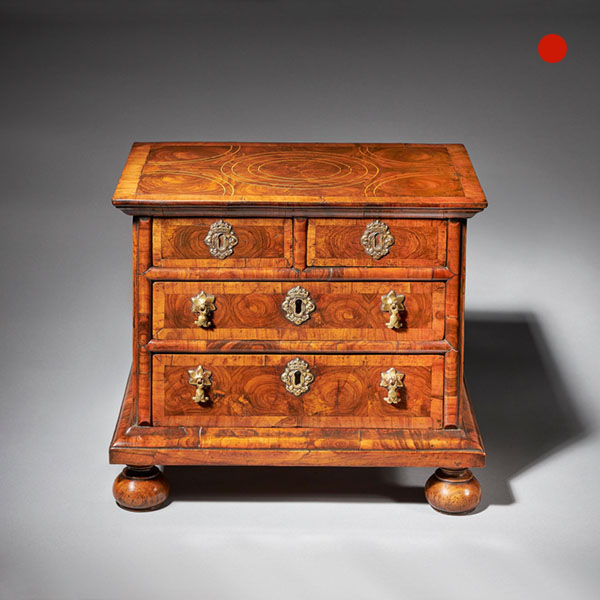
Diminutive 17th century William and Mary Olive Oyster Miniature Chest of Drawers
Diminutive 17th century William and Mary Olive Oyster Miniature Chest of Drawers Sold Follow UsDiminutive 17th century William and Mary Olive Oyster Miniature Chest of Drawers From the reign of King William & Queen Mary (1688-1702)...
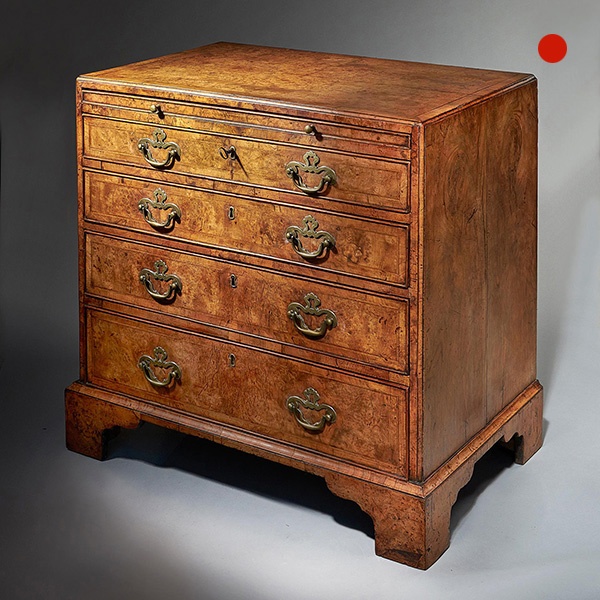
George II Burr/Burl Walnut Caddy Topped Chest, circa 1730-1740
George II Burr/Burl Walnut Caddy Topped Chest, circa 1730-1740 SOLD Follow UsGeorge II Burr/Burl Walnut Caddy Topped Chest, circa 1730-1740 An important George II burr walnut caddy topped chest, circa 1730-1740. With firm...
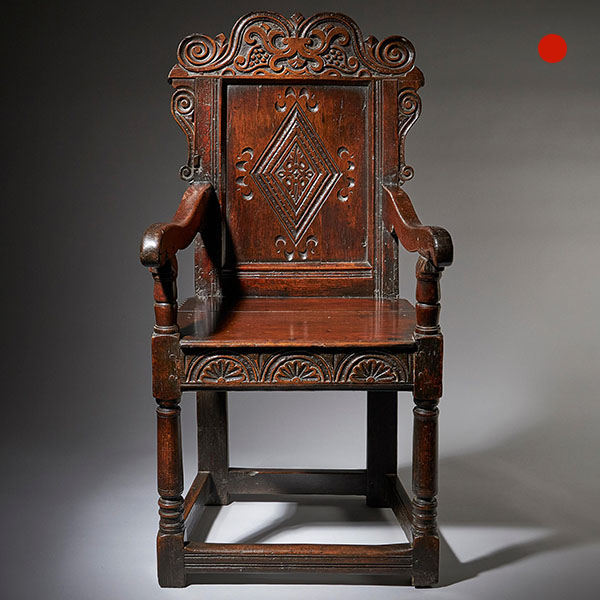
17th Century Carved Oak Wainscot Chair, The Yorkshire Chair
17th Century Carved Oak Wainscot Chair, The Yorkshire Chair Sold Follow Us17th Century Carved Oak Wainscot Chair, The Yorkshire Chair A superb and original carved Wainscot armchair, circa 1660. Yorkshire This superb Wainscot chair dates from...
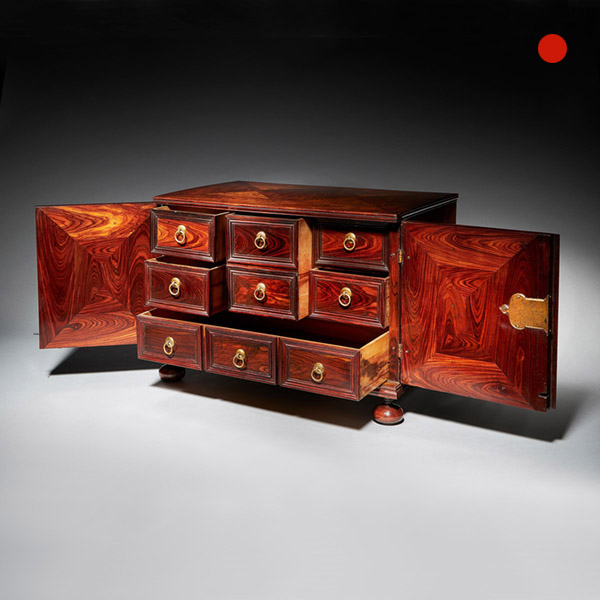
Extremely Rare and Fine Miniature Kingwood Table Cabinet from the Reign of Charles II
Extremely Rare and Fine Miniature Kingwood Table Cabinet from the Reign of Charles SOLD Follow UsExtremely Rare and Fine Miniature Kingwood Table Cabinet from the Reign of Charles Extremely rare and fine miniature kingwood table cabinet from...
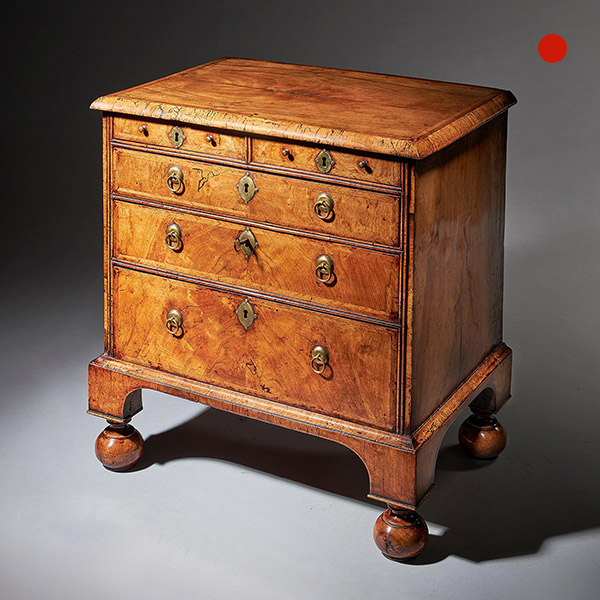
An extremely rare George I walnut chest of small proportions on ball and bracket
An extremely rare George I walnut chest of small proportions on ball and bracket SOLD Follow UsAn extremely rare George I walnut chest of small proportions on ball and bracket The cross-grain moulded and feather banded book-matched top sits...
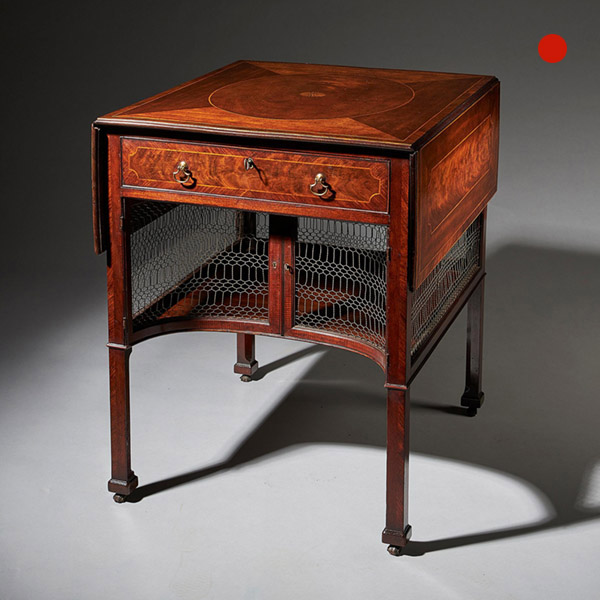
An extremely fine and rare early George III mahogany supper table plausibly by Thomas Chippendale
An extremely fine and rare early George III mahogany supper table plausibly by Thomas Chippendale Sold Follow UsAn extremely fine and rare early George III mahogany supper table plausibly by Thomas Chippendale An extremely fine and rare early...

Diminutive 17th century William and Mary Olive Oyster Miniature Chest of Drawers
Diminutive 17th century William and Mary Olive Oyster Miniature Chest of Drawers Sold Follow UsDiminutive 17th century William and Mary Olive Oyster Miniature Chest of Drawers From the reign of King William & Queen Mary (1688-1702)...

George II Burr/Burl Walnut Caddy Topped Chest, circa 1730-1740
George II Burr/Burl Walnut Caddy Topped Chest, circa 1730-1740 SOLD Follow UsGeorge II Burr/Burl Walnut Caddy Topped Chest, circa 1730-1740 An important George II burr walnut caddy topped chest, circa 1730-1740. With firm...

17th Century Carved Oak Wainscot Chair, The Yorkshire Chair
17th Century Carved Oak Wainscot Chair, The Yorkshire Chair Sold Follow Us17th Century Carved Oak Wainscot Chair, The Yorkshire Chair A superb and original carved Wainscot armchair, circa 1660. Yorkshire This superb Wainscot chair dates from...

Extremely Rare and Fine Miniature Kingwood Table Cabinet from the Reign of Charles II
Extremely Rare and Fine Miniature Kingwood Table Cabinet from the Reign of Charles SOLD Follow UsExtremely Rare and Fine Miniature Kingwood Table Cabinet from the Reign of Charles Extremely rare and fine miniature kingwood table cabinet from...

An extremely rare George I walnut chest of small proportions on ball and bracket
An extremely rare George I walnut chest of small proportions on ball and bracket SOLD Follow UsAn extremely rare George I walnut chest of small proportions on ball and bracket The cross-grain moulded and feather banded book-matched top sits...

An extremely fine and rare early George III mahogany supper table plausibly by Thomas Chippendale
An extremely fine and rare early George III mahogany supper table plausibly by Thomas Chippendale Sold Follow UsAn extremely fine and rare early George III mahogany supper table plausibly by Thomas Chippendale An extremely fine and rare early...
YOU MAY ALSO LIKE
No Results Found
The page you requested could not be found. Try refining your search, or use the navigation above to locate the post.
No Results Found
The page you requested could not be found. Try refining your search, or use the navigation above to locate the post.









